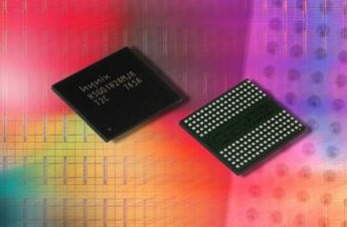 Nanke suffered a net loss of RMB 32.819 billion after taxation in the first 11 months of the previous month, and a net loss of RMB 1.75 per share. This indicates that although the DRAM market conditions have recently recovered, they have still not reached the scale of the economy of the industry, and the losses are still there.
Nanke suffered a net loss of RMB 32.819 billion after taxation in the first 11 months of the previous month, and a net loss of RMB 1.75 per share. This indicates that although the DRAM market conditions have recently recovered, they have still not reached the scale of the economy of the industry, and the losses are still there. Nanke’s November revenue grew by 19% from October, reflecting the recent recovery in DRAM market. Nanke stated that in addition to standard DRAM foundry customers starting to cover inventory, Asian-based digital TV and set-top boxes and other niche-type memory customer needs also The simultaneous warming is the reason for the rebound in revenue in November.
However, Nanke’s net loss after taxation in November was 3.302 billion yuan, with a net loss of 0.18 yuan per share, which was higher than the net loss after tax of October of 2.356 billion yuan in October. Accumulated losses in October and November totaled 5.658 billion yuan, only In the third quarter, 56% of the loss amount.
HDI PCB Specification
High density interconnect (HDI) PCBs represent one of the fastest-growing segments of the printed circuit board market. Because of its higher circuitry density, the HDI PCB design is able to incorporate finer lines and spaces, smaller vias and capture pads, and higher connection pad densities. A high density PCB features blind and buried vias and often contains microvias that are .006 in diameter or even less.
HDI PCBs are characterized by high-density attributes including laser microvias, fine lines and high performance thin materials. This increased density enables more functions per unit area. Higher technology HDI PCBs have multiple layers of copper filled stacked microvias (Advanced HDI PCBs) which creates a structure that enables even more complex interconnections. These very complex structures provide the necessary routing solutions for today's large pin-count chips utilized in mobile devices and other high technology products.
The HDI PCBs we offer include the following highly requested characteristics:
Blind and/or buried vias
Via-in-pad
Through vias from surface to surface
20 µm circuit geometries
30 µm dielectric layers
50 µm laser vias
125 µm bump pitch processing
Applications
HDI PCB is used to reduce size and weight, as well as to enhance electrical performance of the device. HDI PCB is the best alternative to high layer-count and expensive standard laminate or sequentially laminated boards. HDI incorporate blind and buried vias that help to save PCB real estate by allowing features and lines to be designed above or below them without making a connection. Many of today's fine pitch BGA and flip-chip component footprints do not allow for running traces between the BGA pads. Blind and buried vias will only connect layers requiring connections in that area.
HDI PCB
HDI PCB,Special HDI PCB,HDI Prototype PCB,HDI Board PCB
Storm Circuit Technology Ltd , http://www.stormpcb.com